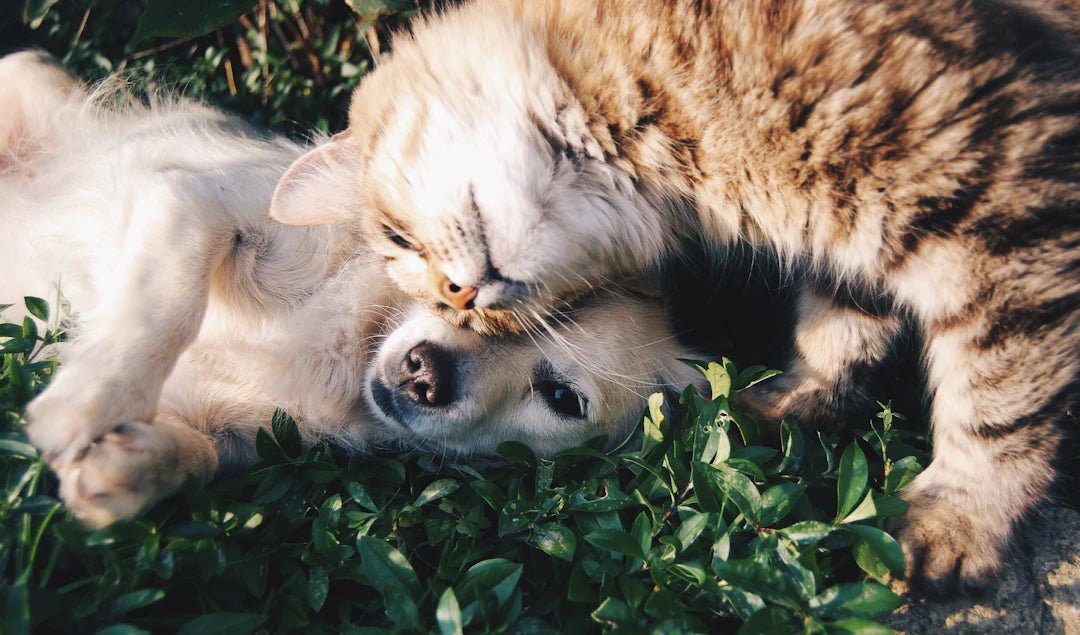Recognizing Pet Stress: Signs and Solutions
Frequently Asked Questions
1. What are the common signs of stress in pets?
2. What causes stress in pets?
3. How can I create a calm environment for my pet?
4. When should I consult a veterinarian about my pet's stress?
5. What relaxation techniques can help alleviate stress in my pet?
As pet owners, we cherish our furry friends and strive to provide them with a happy, healthy life. However, just like humans, our pets can experience stress too. Understanding the signs of stress in pets and knowing how to effectively provide relief is essential for their wellbeing. In this article, we will explore the common signs of stress in pets and offer helpful solutions to ensure a calm and content environment for your beloved companions.
Understanding Pet Stress
Stress in pets can stem from various sources. Major changes, such as moving to a new home, introducing a new family member, or changes in routine can often trigger anxiety in animals. Additionally, factors like loud noises, unfamiliar situations, or absence of their owners can also lead to stress. Recognizing the signs early on can significantly improve your pet's quality of life.
Common Signs of Stress in Pets
Behavioral Changes
Changes in behavior are one of the most noticeable indicators that your pet may be experiencing stress. Here are some common behavioral signs:
- Excessive Barking or Meowing: An increase in vocalization can indicate anxiety or unease.
- Avoidance or Hiding: If your pet suddenly starts to isolate themselves, it may be due to stress.
- Aggression: Uncharacteristic aggression towards people or other animals can be a sign of stress.
- Destructive Behavior: Chewing, scratching, or digging can be a way for stressed pets to cope.
- Excessive Grooming: Over-grooming or even skin issues can result from stress.
Physical Signs
In addition to behavioral cues, there are several physical signs that your pet may be feeling stressed. Keep an eye out for the following indicators:
- Changes in Appetite: A stressed pet may eat less or refuse food altogether.
- Panting or Rapid Breathing: This can be a sign of anxiety or panic in pets.
- Trembling or Shaking: Visible shivering can indicate high-stress levels.
- Excessive Salivation: If you notice your pet drooling more than usual, it could be a stress response.
- Widespread Body Language: Look for signs such as flattened ears, lowered tails, or tense body posture.
Causes of Stress in Pets
Understanding what causes stress in your pets can be instrumental in addressing their needs. Let’s look at some common stressors:
Environmental Changes
Moving to a new home or rearranging your living space can unsettle your pet's sense of security. Pets thrive on routine and familiarity, and any disruption can lead to stress. Make sessions of adjustment easier by introducing gradual changes rather than immediate upheaval.
Separation Anxiety
Pets can form strong bonds with their owners, making separation particularly difficult. If you find your pet becomes distressed when you leave the house, they may be suffering from separation anxiety. This condition can manifest in destructive behaviors, incessant barking, or attempts to escape.
Loud Noises
Many pets are sensitive to loud noises, including thunderstorms, fireworks, or construction work. Such sounds can trigger fear and anxiety, causing pets to become agitated or seek refuge. It’s beneficial to create a safe, quiet space where they can retreat during these stressful events.
Effective Strategies to Alleviate Stress
Now that we've identified the signs and causes of stress in pets, let’s look at effective ways to help alleviate their anxiety:
Creating a Calm Environment
Your home should be a sanctuary for your pet. Here are ways to create a stress-free zone:
- Safe Space: Designate a quiet area equipped with their bed, toys, and comfortable blankets.
- Routine and Consistency: Try to maintain a regular schedule for feeding, walks, and playtime.
- Comfort Items: Leave items that provide comfort, such as a favorite toy or a piece of your clothing.
- Music or Sound Therapy: Soft music or white noise can help mask frightening sounds.
Exercise and Playtime
Regular exercise is crucial for a pet’s well-being. Engaging in active play not only provides physical benefits but also promotes mental health. Consider incorporating daily walks, fetch games, or even agility training into your routine. For travel safety, a puppy seat leash can also help create a stress-free transport experience for your pet.
Socialization
Positive interactions with other pets and people can help your pet feel less anxious. Gradually socialize your pet to new experiences, environments, and company. Dog parks, playdates, or even group training classes can enhance their confidence and reduce stress.
Consult with a Veterinarian
If you notice persistent signs of stress or anxiety in your pet, it’s a good idea to consult your veterinarian. They can assess your pet’s behavior and overall health to propose a suitable action plan, including behavior modification strategies or, in some cases, medication.
Adopting Relaxation Techniques
There are various relaxation techniques that can help soothe your stressed-out furry friends:
- Massage: Gentle stroking and massage can help calm your pet and improve their mood.
- Aromatherapy: Some scents, such as lavender, have calming properties. Always ensure they are pet-safe.
- Training and Obedience Practices: Teaching commands can not only reinforce good behavior but can also distract from stressors.
When to Seek Professional Help
If your pet’s stress indicators escalate or fail to respond to home interventions, it may be time to seek help from a professional trainer or animal behaviorist. They can assess the situation and provide specialized strategies tailored to your pet's unique needs.
Final Thoughts: Nurturing Happiness in Your Pets
Understanding and addressing stress in pets is not just beneficial for their emotional health, but it also strengthens the bond between you and your furry companion. By recognizing the signs of stress and incorporating proactive solutions, you can cultivate a positive and relaxed environment that enhances your pet's life. Remember, a happy pet often leads to a happier home. It's not just about managing stress—it's about creating an atmosphere of well-being in your lives together.



